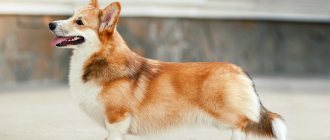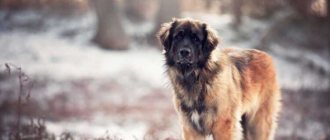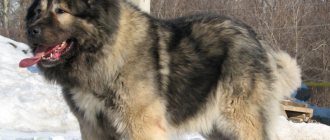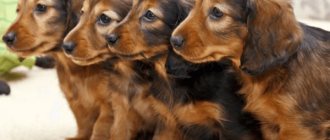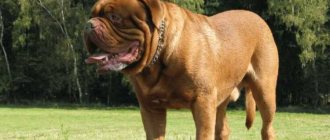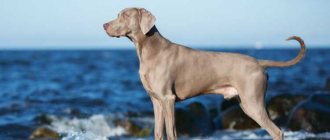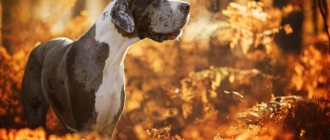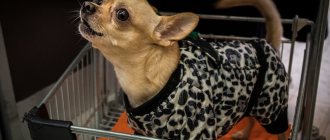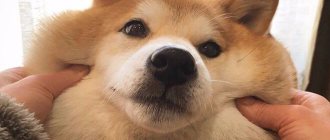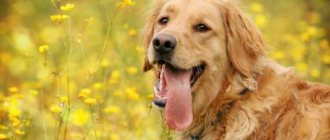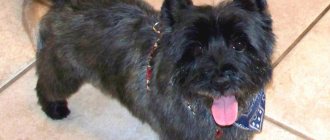The group of hunting dog breeds is quite extensive. Many of its representatives are well known to Russian animal lovers. Epagnole Breton is still not widespread in our country. This dog is famous for its excellent hunting qualities, high intelligence, sociability and obedience.
These are universal pointing gun dogs that can adapt as much as possible not only to the owner, but also to various living conditions. Dog experts believe that the name of the breed comes from the word espagnol. At the same time, there is a version that Breton epaignoles were named after the style of their work, s'espaignir (stretching out, lying down).
History of the breed
Animals very similar in appearance to modern epanols appeared in the 15th century in France. Since the 17th century, images of such dogs began to often appear on tapestries and paintings by famous masters, for example, on the canvases of the Dutchman Jan Steen.
Until 1850, these dogs were not called Epagnole Breton. Reverend Father Davis, describing hunting with dogs that looked like pointers, noted that they had longer hair and a short tail. These dogs did an excellent stance, quickly brought prey and were surprisingly obedient.
For the first time, the Breton epagnole was officially presented at an exhibition in 1896. The first representative of the breed to appear before the general public was a wonderful dog named Pincon Royal. Its owner was the Viscount of Brittany de Comboug. The breed club began its work in 1907 in Brittany. In September of the same year, the first breed standard was presented. Today these are the most popular hunting dogs (photos of them are published in cynological publications) in the USA and Europe.
Health and life expectancy
The Epagnole Breton is, as a rule, a healthy, hardy dog that remains active for up to 11-12 years. Every fifth dog dies of old age at the age of 14-15 years. The list of hereditary diseases characteristic of the breed includes:
- Hip dysplasia;
- Lupus;
- Epilepsy.
Working dogs often suffer various types of injuries. In old age, it is possible to develop any senile ailments, including neoplasms. Life expectancy is 12-14 years.
Head
The dog's head has the correct shape, the skull is slightly rounded in front and on the sides. The transition from forehead to muzzle is quite smooth. The muzzle is straight. The nose is harmonious in color with the color of the animal, wide. The eyes are large, round and slightly elongated, very expressive. The color is usually consistent with the coat, but dark is preferred, although other colors are not considered a fault. The ears are triangular in shape, mobile, set high, of medium length. They are partially covered with soft wavy hair.
Appearance
Leonberger (dog): description of the breed, character
The Breton is a dog with a very strong skeleton. The head is round in shape, wide with a noticeably protruding muzzle. The lips are thin, the eyes are lively and expressive, dark amber in color. The ears are set high and slightly rounded.
The body is short. The croup is sloping, the chest is deep. The tail does not exceed 10 cm in length, and in some representatives of the breed it may be completely absent.
The hind limbs are powerful, and the forelimbs are thin and light. The coat is slightly wavy, there is no undercoat. Bretons come in black and white, tan and white, roan, chestnut and white, and white, black and orange.
Vices
All deviations from the given requirements are shortcomings (defects). Their severity is assessed in proportion to the severity of the deviations, as well as their impact on the welfare and health of the animal. The following are considered disqualifying defects:
- character defect (the dog is aggressive towards other animals and humans, biting);
- cowardice;
- dimensions different from the standard limits;
- converging lines of the muzzle and skull;
- excessive variegation;
- white spots on the ears or around the eyes. light, multi-colored eyes;
- strabismus;
- ectropy and entropy;
- undershot or overshot;
- depigmentation on the eyelids or nose.
Character
The Breton Epagnole is a balanced, intelligent and very kind dog. She loves to please her owner. Her character is reflected in her intelligent and friendly gaze. Hunting dogs, photos of which can be seen in magazines for animal lovers, are generally very smart, but Bretons, according to their owners, just don’t know how to talk.
This insightful dog always very skillfully uses the slightest weaknesses of the owner, surprising him with his resourcefulness. Epagnol does not show aggression towards strangers. He is friendly and enjoys playing with children, especially if the dog has grown up with them since childhood.
An abundance of energy, a passion for hunting, vitality and sociability - this is the Breton epagnole. These are very sociable creatures that can make friends with both dogs and cats. This dog can become not only an excellent hunter's assistant, but also a sensitive companion and pet. The dog has absolutely no dog smell. Even after returning from the swamps (having cleaned the fur on his own), he can spend the night with you in a tent, and you will not feel any smell.
Probably, someone will consider the portrait of the Breton epañol described by us too idyllic. But it should be borne in mind that this cute animal is endowed with a rather strong character; at some point the dog may become stubborn.
Feeding
The Breton Epagnole can eat any kind of food. At the same time, experienced dog breeders recommend choosing industrial products for your daily diet. This is explained by its balance and ease of use.
When choosing dry food, it is best to give preference to premium options designed for medium-sized dogs leading an active lifestyle.
If preference is given to natural nutrition, then the diet must include lean meat, cereals, sea fish, bones, offal, vegetables, fruits, and dairy products.
Upbringing
From a very early age, Breton Epagnole puppies must understand who is the leader for him, whose word is law. The child must know what can be done and what cannot be done under any circumstances. Raising a puppy will require patience and perseverance from the owner. Without offending the animal, without being rude, but firmly and decisively, all attempts at disobedience that may appear in adolescence should be suppressed.
Today, about twenty dogs of this breed are officially registered in Russia. All adults work great, the owners are delighted with their four-legged helpers.
Where to buy an Epagnole Breton dog
In 2010, about 15 Bretons were registered in Russia, but since then the number of dogs has increased significantly, the first nurseries began to appear that professionally breed high-class working dogs, and the National Breed Club was registered. If we talk about abroad, then there are very good livestock in France, Italy, and Canada.
When choosing a puppy, it is very important to make sure that he was properly socialized and raised in good conditions, eats in accordance with his age, is absolutely healthy in appearance, and has the right psyche. The issue of gender is rather individual and both females and males work equally well, the pedigree of the dog is more important.
Price
In Russia the price range is very wide. A Breton Epagnole puppy costs from 15,000 to 50,000 rubles. rarely more expensive. Private breeders usually sell babies for no more than 15,000 rubles. Cheaper puppies often do not have documents confirming their origin. From 35,000 rubles they ask in nurseries for a puppy of good blood with prospects.
Usage
As we have already said, the Breton Epagnole is an attentive and intelligent dog. She has an excellent sense of smell, is excellent at retrieving game (including from cold water), and makes a long stance. The way it works in the field is reminiscent of a setter (at dusk, not knowing that it is an epañole, you will probably say that it is a setter, but without a tail).
However, there are also differences: epañol actively manifests itself in any area. The Breton is an excellent climber, so this dog is irreplaceable in mountainous areas. When the hunt takes place in tall grass, during the search process the epañol resembles a tireless hare - as it runs, it constantly jumps up, and therefore the hunter never loses sight of it.
The dog also does not get lost in dense undergrowth. A bell is hung around her neck. As soon as it calms down, the dog is in a standing position. From 4-5 months, puppies show a passion for hunting and demonstrate excellent working qualities. Dogs are highly trainable. The animal needs a lot of physical activity to always be in shape, so it is advisable to use it as a hunting dog. Today it is the most popular hunting dog in the world.
Epagnole Breton: first acquaintance
Suddenly I meet him in the company of two four-legged animals - his familiar black and piebald bitch ROS and a new red and piebald miracle. Slightly taller than a spaniel, but not a spaniel.
He says: this is an epagnole Breton from the pointing breeds of hunting dogs. I came to him as a grown puppy. I stayed with a breeder who had two epagnoles. It's hard for a hunting dog to be without a field. So he took it so that it wouldn’t disappear on the sofa...
Lately he has been talking a lot about how he went hunting with both dogs together and what came of it. And it turned out interesting, to say the least! The breed's manners are too different - the styles of work are different. The eldest, Lada, walks no further than 40 meters and picks up game almost on the move - have time to keep an eye on it. At this time another... And where is the other? You look around - and she, as expected, is working in the signature manner of a cop with a wide search and over there, to the side, about 80 meters away, she has already frozen in a characteristic stance, as if she is hypnotizing someone. We must hurry to her. At this time, the black and piebald Lada began to stretch, and the bird's approach and rise would soon follow. At least burst! I had to change gears: take turns hunting, first one, then the other. This causes them resentment. Although they don’t speak a word, it’s all written on their faces. And it’s better not to look them in the eyes!..
This summer, a friend visited us near Vyazniki with an epañol. He hunted in the same flood meadows where, according to the recollections of old-timers, N.A. himself often went in his time. Nekrasov specifically hunted great snipes. There were a great many of them here back then. And even now it’s not so little... Since these days I was busy judging at the Vyaznikovsky spaniel competitions, I was not able to see how the mini-cop works. I would probably have to remain ignorant of this issue for a long time. But now I find out that the Epagnole Breton Club of MOOiR organized a competition in practical pheasant hunting at the end of October in the village of Goryachevo, Yuzhsky district, Ivanovo region. It’s just a stone’s throw from Kovrov – some 30 kilometers on asphalt. I couldn’t miss such an opportunity to get to know a new breed of cops in action... The competition will be tomorrow, and today we will stop at a private hunting base in the village of Lychevo - right on the border of two regions: Vladimir and Ivanovo. This is the collection point. Overnight in a decent two-story hunting house behind a solid fence.
As usual, the first evening is a “holy” evening of meeting old friends and making new acquaintances and memories. Our own warm company - everyone knows each other and understands each other perfectly. After spending the night at the base, at dawn we headed to the meadows. A gusty strong wind blows in one direction. The huge meadow is bordered along the horizon by a golden ribbon of young birch trees preparing for winter. The unplowed expanse is covered from edge to edge with brown, withered grass with clumps of thick weeds. Here and there, lonely, as if running out of the general formation on patrol, young birch trees flutter their golden foliage in the wind. They will be guides for experts when launching a bird.
The competition has begun! Our first performing couple - Bazhenova and Breton Amelia are ready to perform. Individual instructions to load the weapon, and... “Amelia - look!” With great attention and interest I follow the work of a small dog: style of movement, speed, breadth of search, cleanliness of shuttle execution, manner of holding its head and catching smells on horseback, obedience to the command “change direction.”
I watched everything, one might say, meticulously, although these elements did not influence the assessment of the performance. Here, at the practical hunting championship, the criteria are completely different. Simply, being a “devout” spanielist, he carefully and jealously compared the work of the Bretons with the ROS.
Hand on heart, I immediately liked the Bretons’ work. I was especially impressed by the rapid movement, the breadth of the search, and the marking of a hidden bird by its stance. It was possible to slowly move behind the dog and not be afraid that the hot dog would lift the game onto its wing before the hunter got ready to shoot. The first shots were heard from afar - those speaking under another expert commission had preceded us. But we are also “not born with bastards” - we, too, as they say, “the fire is going according to plan.”
Suddenly Amelia froze in her stance. At full gait, she turned her whole body into the wind, pulled a little and froze near the thick sage grass. The owner calmly approached the dog, took the gun at the ready, and the frog “saw!” sent the dog forward. A bright, long-tailed rooster took off with a crack of wings and indignant cackling. While waiting for the shot, I follow the flight of a bird that is unusual for our area. There is no shot and no shot. A moment, another, and the pheasant is already out of reach of the gun. He flew away, as we joke, “to a distant cordon.” I silently wait for an explanation. She didn’t shoot because she didn’t have time to stop the hot dog. In the Regulations on Practical Hunting Competitions there is a clause that if a hunter shoots while the dog is moving, then it’s all over for him. Withdrew from the competition.
Some time later, the epañolka made a stance again. The pheasant, or rather the gray pheasant hen, took off with a characteristic noise. At the same time, the dog stood up on time. The shot misses! The second one is gone! And this one went to the “distant cordon”, increasing the chances of the following participants. The time allotted for this couple is over. Change of presenter with the dog... A small “smoke break”, a short exchange of opinions and impressions, while the famous spanielist Mikhail Markov (he is always ready to help his colleagues) - his turn by lot is not close - launches the birds. Next couple. Red-haired Ami leads her owner A. Danilkin to the starting point. It all ended pretty quickly for this couple. Swift shuttle. Beautiful stand. The owner approached. The message. The crack of wings. Accurate shot. The pheasant falls, and... the couple is removed from the competition. The expert commission led by O.I. Yanushkevich, as they say, is strict, but fair: the reckless hunter got excited and shot before he stopped the dog. It’s a shame, of course, but the vivid feeling of hunting excitement he experienced and the successful shot soften the grief.
Both the owners and the dogs did their best in the time allotted by the Regulations, trying to show their best side. There was everything: joy, success, and grief. There were also oddities when the Breton took a stance so firmly that the pheasant, a running bird, managed to run away from the frozen dog, and the leader, waiting for the takeoff of the game with a gun at the ready, basically stood over an empty place. There were chases and unfortunate mistakes. Various things happened, but the general mood was positive. Some advanced owners used the latest electronic advances. I looked with interest at the new bright yellow device on the neck of one dog - a “beeper”, which helps the hunter determine the location of the dog in dense weeds and bushes: is it standing or moving... Of course, it’s convenient: it’s no longer necessary to closely monitor your fleet-footed assistant. However, I am very disapproving of such fashionable electronic “things”. They interfere with the achievement of hunting mastery, atrophy the feeling of the need to improve oneself and ultimately make one helpless in a real hunt...
I was disappointed by the not very successful performance of an experienced couple: Markov M. and his Nike (ROS) - not a single encounter with a bird. It is well known: a spaniel already has a shuttle and, therefore, a narrower search range for birds in the field than a pointer. Mikhail, for some reason of his own, stubbornly directed the dog to the left, ignoring the spaniel’s attempts to go to the right (at times, apparently, a playful breeze brought “snippets” of bird odors to the dog’s senses and thereby led him away from the most likely location of the pheasants). The dog worked all the control time in vain. It’s a shame... I’ve learned many times that you have to trust a dog. As a result, the couple was left without a quote.
Another couple, Pechenyuk V. and his Dora (ROS), were also left without a price, but for a different reason. The spaniel quickly figured out the smells and picked up the pheasant in excellent style, but didn’t stop, but rushed on, so much so that, having picked up a couple more pheasants along the way, she herself went “to the distant cordon.” Her flair and clear lifts, of course, could not save the situation.
I was pleased with the performance of the couple A. Sergeev and ROS Ocean. The dog worked well, quickly found pheasants and lifted them onto the wing. But due to the dog's ardor, the owner was somewhat late in firing. The situation was corrected by his accuracy. He took both birds with the first shot almost at the maximum range and deservedly became the winner of the competition with the highest number of points - 36.
The second and third places went to A. Kormilitsin with the Breton horse Unique - 23 points and the drathaar Bagheera - 20 points. They all deserved awards. In addition, the Club established additional prizes, which were awarded to: a) the most experienced dog - Dan - Kotlyarova A.; b) the most harmonious couple - A. Kryuchkova and Paul Prezan; c) the best trainer - O. Yanushkevich; d) for contribution to the development of the Epagnole Breton breed in Russia - A. Kormilitsyn and Mikhail Vorontsov.
The participants warmly thanked the organizers of the event, Igor Panaev and Mikhail Vorontsov.
Taking this opportunity, I sincerely thank the organizers who invited me as an expert to participate in such an important and significant event for the Epagnole Breton Club - the largest breed event in Russia today. This is the first time that so many epagnoles have gathered together. This meeting of like-minded people is a good school. I would like to congratulate the club and participants on the successful competition and wish them success in the development of the wonderful Epagnole Breton breed. For me personally, this was in every sense my first acquaintance: with a new very interesting breed of cops in Russia, with the hunt for a released pheasant, with new like-minded people, with the Breton Epagnole Club MOOiR and the acquisition of new experience.
Leonid Karantaev December 14, 2012 at 00:00
Maintenance and care
The Breton needs to be bathed and brushed regularly. If the dog is used as a hunting dog, it is necessary to expel worms twice as often as companion dogs (every six weeks).
Plant seeds can cause skin problems, so check your pet's paws regularly. Don't forget that this breed was bred to hunt birds. This is what she does if possible. But if epagnoles grow up with other animals, they do not see them as objects of hunting, so instinct must be developed. This animal is suitable only for active owners. It is advisable to keep a dog in a country house or in a rural area. It is also possible to keep her in a city apartment, provided there are walking areas with a spacious playground and long walks. And one more important nuance. This dog is extremely emotional and sensitive, so peace and harmony should reign in the house.
Tips for caring for your Breton Epagnole
Special care is not required during the maintenance and cultivation of epagnoles. These dogs are unpretentious, but despite this, close attention should still be paid to the ears, eyes and claws of the animal. They need to be cleaned and trimmed promptly. For cleaning, cotton pads are used, which are pre-moistened with a special solution. The claws are trimmed using special tools.
It is recommended to perform dental hygiene at least once a week, as well as systematically treat your pet for parasites.
The fur should be combed using a brush with stiff bristles. During the molting period, this needs to be done daily, but in normal times it is enough to do it once a week.
Advice! It is recommended to bathe your Breton Spaniel as needed.
Breton epañol: reviews from owners
The owners of such a four-legged friend do not hide their admiration for this animal. The dog is smart, easy to train, not aggressive, treats well not only the owner, but also all family members. Can become a wonderful companion.
But hunters are especially pleased with their purchase. Epagnole Breton works great, understands all commands perfectly, and often even gestures.
Some difficulties may arise when keeping an animal in a city apartment with insufficient physical activity.
